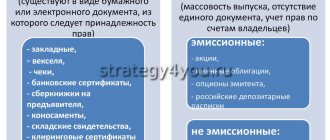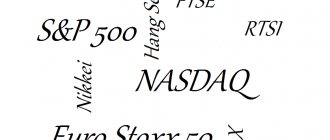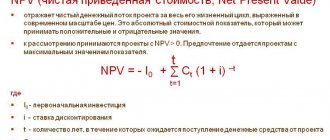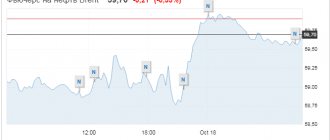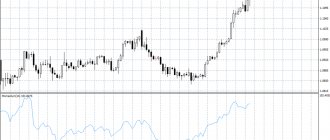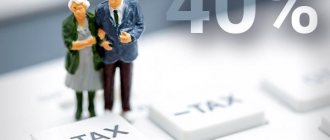What kind of Central Bank is this and why are they needed?
The term “convertible securities” is used to refer to assets that, under certain conditions, can be exchanged for other types of securities.
By law, owners of bonds (less commonly, preferred shares) can convert them into ordinary shares at their own discretion. A joint stock company issues convertible securities when it needs additional money for development. Investors are more willing to invest capital in these reliable and safe securities.
What is securities conversion
The direct exchange of one financial instrument for another is called conversion. The operation is carried out when it is provided for in the prospectus and in the charter of the joint-stock company.
Regulated by
The procedure for exchanging securities is described in the Federal Law “On Joint Stock Companies” and the Standards for the Issue of Securities. According to these regulatory documents, conversion is carried out on the basis of the charter of the joint-stock company or in the event of its reorganization. Companies are prohibited from changing the procedure and conditions after deciding to issue convertible bonds.
Convertible bonds were established in 1950 when Japanese trade laws were revised, and they became widely used as a means of financing.
Convertible bonds are essentially equivalent to ordinary junior shares. They represent bonds that will be converted into ordinary shares. Therefore, they have the same effect as deferred common stock financing. The transfer or conversion cost (the exchange ratio of convertible securities and common stock) of convertible bonds is higher than the new float of common stock and has advantages over issuing shares. [p.230] Long-term financing through borrowed funds. Preferred and ordinary shares. Convertible securities, exchangeable bonds and warrants. Advantages and disadvantages of additional financing through loans. Paying off existing debt by issuing a new loan. Sinking fund. [p.472]
Expenses related to convertible securities are [p.196]
If a JSC does not have convertible securities or preferential purchase and sale agreements for ordinary shares, then only basic earnings (loss) per share are reflected in the financial statements. [p.198]
If, after the reporting date, transactions took place with ordinary shares, convertible securities and agreements for the purchase and sale of shares at a price below their market value, which are significant for users of financial statements, information about these transactions is disclosed in the explanatory note. Paragraph 18 of the Methodological Recommendations lists the types of transactions of this kind. [p.199]
CONVERTIBLE SECURITIES, [p.638]
In addition to financing instruments such as direct debt and shares, a company may use an option contract, which gives the owner the right to buy common stock or exchange it for something else within a specified period. As a result, the option's value is highly susceptible to changes in stock prices. In this chapter, we look at 3 special types of options used in financing: convertible securities, exchangeable bonds, and warrants. The appendix to this chapter discusses the theory of option pricing in detail. [p.638]
Properties of convertible securities [p.638]
A convertible security guarantees the investor a fixed return or a set dividend on preferred shares. In addition, the investor receives the right to exchange the convertible security for common stock and thus share in the company's profits. Because of this right, a company can usually sell convertible securities that have a lower yield than regular issues of bonds or preferred stock. [p.639]
Almost without exception, convertible securities are guaranteed at the redemption price. Just as with common bonds and preferred stock, a redemption clause allows a company to demand that the securities be presented for redemption. However, only a small portion of convertible securities are actually redeemed. Instead, the purpose of a redemption is to accelerate conversion when the conversion value of the securities is higher than the redemption price. [p.640]
We find that the potential dilution when issuing convertible securities is less than when issuing common securities because fewer additional shares are issued. [p.642]
Another advantage of a company issuing convertible securities is that the interest rate or dividends on preferred stock are lower than the payout on common bonds or preferred stock. Convertibility conditions make the issue more attractive to investors. The greater the value of the convertibility clause for investors, the less income on the securities the company will have to pay in order to sell the issue. Initial low interest payments can be very beneficial for growth stage companies as it allows them to hold more cash for their growth. Moreover, companies with relatively low credit ratings but good growth prospects will have a very difficult time selling common stock or preferred stock. The market may view the convertible issue of these companies more favorably, treating it not as a bond or convertible preferred stock but as common stock. [p.642]
Companies typically issue convertible securities with the expectation that the securities will convert over a specified period of time. Investors may exercise this right at any time and exchange convertible securities for common stock; however, they may elect to
To expedite conversion, companies issuing convertible securities must generally require them to be presented for redemption. For this requirement to be met, the market price of the securities being converted must be significantly higher than the redemption price so that investors will convert rather than accept the lower redemption price. Many companies consider a 20 percent premium to be sufficient to cushion a potential decline in market price and to “tempt” investors to convert their securities. The conversion price of a convertible bond (par value $1,000) could be $50 and the redemption price $1,080. For the conversion value of the bond to equal the redemption price, the market price of the share must be $1,080/20, or $54. per share. If the bonds mature when the market price is $54, many investors may choose to buy back rather than convert. The company will then have to repurchase most of the bonds until the conversion value of the bonds is 20% above the redemption price, a value that corresponds to the market value of the common stock of approximately $65. per share. At this price, investors who agreed to the buyout are incurring significant losses. Research shows that companies tend to redeem their convertible securities after a period of rising market value of their common stock. As a result, the losses of security holders who do not convert are obvious. [p.643]
Stimulating conversion. The company has other ways to “incentivize” conversion as opposed to “forcing” it. By setting the conversion price to accelerate at specified time intervals in the future, the company puts constant pressure on bondholders to convert, provided that the conversion value of the security being converted is relatively high. If you plan to increase the conversion price from 50 dollars. up to 56 dollars at the end of the next month, holders of convertible bonds have an incentive to convert at that time, all other things being equal. If holders wait, they will receive fewer shares. This condition must be established at the time the issue of convertible securities is sold and cannot be used to induce conversion at an arbitrarily specified time. [p.644]
Another way to incentivize is to raise the dividend on common shares, thereby making common shares more attractive. In some cases, the dividend on common stock may exceed the interest on convertible securities. Although these two stimuli increase the volume
Features of debt plus options. The simplistic view that convertible bonds are the best of all possible alternatives because they should have lower interest rates than straight loans and less dilution than equity financing fails to take into account the option nature of this contract. Convertible securities may be considered an outright loan plus an option to purchase common stock. The greater the uncertainty or risk to a firm's cash flows, the lower the value of the loan, all other things being equal. In other words, the greater the risk, the higher the interest rate you need to set to attract lenders. On the other hand, the greater the uncertainty or volatility of cash flows, the higher the value of the option (see appendix to this chapter). [p.645]
Although high-risk companies may not be able to sell the debt directly, the features of the option make the package more attractive in the market. Of course, there is no guarantee that the option will be valuable in the sense of a high common stock price to make the conversion worthwhile. The issue may simply continue to be a debt instrument. Yet the potential realization of share value at the time of issue makes a convertible issue attractive. Thus, convertible securities play an important role for a company facing uncertainty in its operations. [p.645]
As we know, convertible securities have dual value to the investor: their value as bonds or preferred stock and their potential value as common stock. (Since the principles for valuing convertible bonds and preferred stock are practically the same, our subsequent discussions will concern convertible bonds.) When investors buy convertibles, [p.645]
The bond price of a convertible security is the price at which a common bond of the same company would sell on the open market. For a six-month period, it can be determined by solving the following equation for B [p.646]
Mathematically, the ordinary bond value of the convertible foam notes will increase over time or remain constant if their par value exceeds the bond value at the time of issue. At maturity, the bond value will be equal to the par value of the convertible securities, assuming the company makes payments on time. [p.647]
Convertible bonds most often sell at a premium above their bond and conversion value. Recall that the conversion value of a convertible security is simply the current market value of one share of the company's common stock multiplied by the number of shares into which the bond will be converted. The fact that a convertible bond, as defined, provides the investor with a degree of protection is generally reflected in the fact that it sells at a market price slightly greater than its conversion value. In general, the more volatile stock price movements are, the more valuable the protection provided by the bond's level of value. For these reasons, as well as for other reasons that will be discussed later, the market value of convertible securities is often higher than their conversion value. This difference is known as the excess of the market price of the convertible bond over the conversion price. [p.648]
Moreover, convertible bonds generally sell at a premium over the bond price, largely due to the price of the common stock. As long as the market price of a stock is very low relative to the conversion price, the convertibility feature will most often be important because investors will find it profitable to convert the security. To the extent that the convertibility feature is significant, convertible securities will sell at a premium over the cost of common bonds. The higher the market price of a common share relative to the conversion value, the greater the premium. [p.648]
The choice between the two premiums determines the value of the option for investors and is depicted in Figure 23.1. The market price of ordinary shares is shown horizontally, the cost of convertible securities is shown vertically. It should be noted that these two axes have different scales. The diagonal line that comes from the origin reflects the conversion value of the bond. It is a straight line because the conversion rate is invariant with respect to the market price of the stock. [p.648]
The bond value line, however, is related to the market price of the common stock. If a company's financial condition is unfavorable, common stock and bond prices will often be low. In the extreme case where the total value of the company is zero, the value of bonds and stocks is zero. As a company becomes more successful financially and its common stock rises in value, the value of the bond increases, but at a slower rate. After a certain point, the bond value line becomes horizontal, and further increases in the market price of the common stock are not reflected in it. At this point, the bond's price level is determined by what other prime bonds are trading in the market. The curve above represents the market price of the convertible security. The distance between this line and the bond value line is the excess of the convertible bond price over the common bond price, while the distance between the market value line and the conversion value line reflects the excess of the convertible bond's market price over the conversion price. [p.649]
When determining the CPSP, all expenses (income) related to the above-mentioned convertible securities and contracts that the JSC will cease to carry out (receive) in the event of conversion of securities and execution of preferential purchase and sale contracts are taken into account. [p.196]
Convertible security / onvertible se urity) - a bond or preferred share that is converted (exchanged) into a certain number of ordinary shares by the option holder. [p.638]
The terms of conversion are not necessarily constant over any period of time. Many issues of convertible securities guarantee an increase in the conversion price at certain intervals. For example, a bond worth $1,000. may have a conversion price of $40. per share for the first 5 years, $45. per share for the next 5 years, $50. during the 3rd five-year period, etc. In this case, the bond is converted into fewer and fewer shares of common stock over time. Generally, the conversion price is adjusted for any stock split or stock dividend that occurs after the securities are sold. If a common share is split on a 2-for-1 basis, the conversion price is halved. This condition protects holders of convertible securities and is known as a “non-dilution covenant.” [p.639]
The conversion value of a convertible security is the security's conversion ratio multiplied by the market price of the common stock. If a share of M Kesson Company sells for $50, then the conversion value of the convertible bond will be $22.86 x $50. = 1143 dollars [p.639]
At the time of issue, convertible securities will have a higher price than their conversion price. This difference is known as the conversion premium. M Kesson Convertible Bonds sold at $1,000. for the bond. The market price of the common stock at the time of issuance of the convertible securities was approximately $38.5. for [p.639]
Investors in a company's common stock try to identify potential dilution to their equity before a conversion actually occurs. For accounting purposes, a company with convertible securities or warrants must report earnings per share in a manner that allows any reader of the financial statements to see potential dilution. More specifically, they must report earnings per share in 2 ways. The first is primary earnings per share, which is the profit received by common stockholders divided by the actual number of shares outstanding. The second is fully diluted earnings per share, which is the earnings received by common stockholders divided by the total number of shares outstanding plus the number of shares that would be added if all warrants were exercised and all convertible securities were converted. For companies that use convertible securities and warrants for financing, the difference between the two EPS figures can be quite significant. [p.641]
Convertible securities are often used as a means of financing through deferred common stock. These securities are technically debt or preferred stock, but are essentially deferred common stock. Companies that issue convertible securities expect that they will convert in the future. By selling convertible securities instead of common stock, they create less dilution to earnings per share, both now and in the future. The reason is that the conversion price of the convertible securities is higher than the rate of the new issue of ordinary shares. [p.641]
Although we can solve this equation using present value tables, we only need to consult the bond table to determine the market price. Thus, the bond value of the convertible bonds owned by Amos White will be $774. According to this level, it is assumed that if the price of common stock fell sharply to a level at which the value of the convertibility property is small, then the price of the convertible securities would decrease only to $774. At this price, the security could be sold as an ordinary bond in accordance with the level of yield inherent in this type of security. [p.647]
The minimum level of bond value of convertible securities is not constant over time. It varies depending on 1) movements in interest rates in the capital market and 2) changes in the financial risk of a given company. Typically, if interest rates rise, the bond value of the convertible security decreases. If the yield to maturity on the common bond in our example rises from 12 to 14%, the bond value of the convertible will fall from $774. up to 667 dollars Moreover, a company's credit rating may either improve or deteriorate over time. If it improves and the company can sell the common bonds at a lower yield before maturity, the bond value of the convertible bonds increases, all other things being equal. If a company's credit rating deteriorates and the yield on conventional bonds increases, the bond's value level decreases. Unfortunately for the investor, when the market price of a stock falls due to small returns and/or increased risk, creditworthiness may suffer. As a result, the bond value of convertible securities may decline when the conversion value declines, providing investors with less protection than they may have originally expected1. [p.647]
Parameters of convertible securities
These assets are assessed according to the following basic parameters:
- nominal and market value;
- application deadline;
- date of exchange;
- rate and frequency of coupon income;
- conversion rate;
- conversion price.
Conversion rate and conversion price
Of the entire list of parameters, only two are characteristic only of convertible securities:
- conversion ratio, that is, the number of shares per bond;
- The conversion price is the ratio of the bond's face value to the conversion rate.
Examples of convertible bonds
Among the securities of Russian issuers in circulation, you can find about a dozen issues of convertible bonds. Let's take PETROPAVLOVSK-2024 as an example. Its main parameters are presented on the screenshot from the Finam.ru website.
Please note that this security is only available to qualified investors. The bond parameters indicate a conversion premium of 22.5%. It is this part of the price that the holder will have to pay in order to change the paper. At the time of writing, the price per share was 12.98 British pounds, which is equal to $16.93. That is, if the conversion occurred now, the investor would pay $3.8 per share.
An example of a similar instrument issued by a foreign company is Tesla convertible bonds. They were first presented in 2014. The total amount of the placement exceeded $290 million. The exchange was supposed to occur when the shares reached a price of $359.87. At the time of placement of securities, this figure was less than $253. Another issue was announced in 2021. Its volume was $1.35 million. The conversion premium was expected to range from 27.5% to 32.5%. The maturity date of the bonds is 2024.
I also recommend reading:
RGBI index: how to use it
What you need to know about the RGBI government bond index
Features of issuing convertible securities
The placement of exchange assets is associated with special conditions for their issue (more precisely, the time of exchange and rate). This feature is called inversion privilege.
The operation time consists of intervals:
- a waiting period (lasting from 6 to 24 months) when conversion is prohibited;
- the conversion period when the procedure is carried out (continues until the bonds are fully repaid).
Advantages and disadvantages
The use of these bonds carries advantages and risks for both the issuer and the investor.
| For whom | Benefits | Risks |
| Issuer |
|
|
| Investor |
|
|
Experts recommend attracting investments in this way only to steadily growing companies.
Advantages of convertible bonds for investors
Why would an investor invest in convertible bonds when shares of the company he is interested in are available for purchase? Let's try to understand the positive side of such securities.
First of all, this is an opportunity to receive profitability from an increase in the value of a stock, without the risk of incurring losses if quotes go down. In the second case, the asset holder will be able to refuse conversion, if this action is not mandatory, and redeem the paper at par. When, according to the terms of the issue, such an option is impossible, the lack of exchange rate growth of the shares will be partially compensated by the presence of coupon income.
Considering that the Russian market has not yet formed the tradition of long-term stable dividends, the pre-fixed amount of payments looks quite interesting. On the other hand, by investing in convertible bonds, an investor takes on a number of risks.
First of all, this is the likelihood that by the time the time of exchange comes, the offered shares will be of little liquidity. In addition, if the conversion value was initially fixed in the terms of the issue, situations may arise where the actual market price is lower than the one at which the exchange will be made. The investor may also need to exit the security before it matures or is exchanged. At this moment, he risks that the value of the asset will fall due to a decrease in stock prices of this company.


